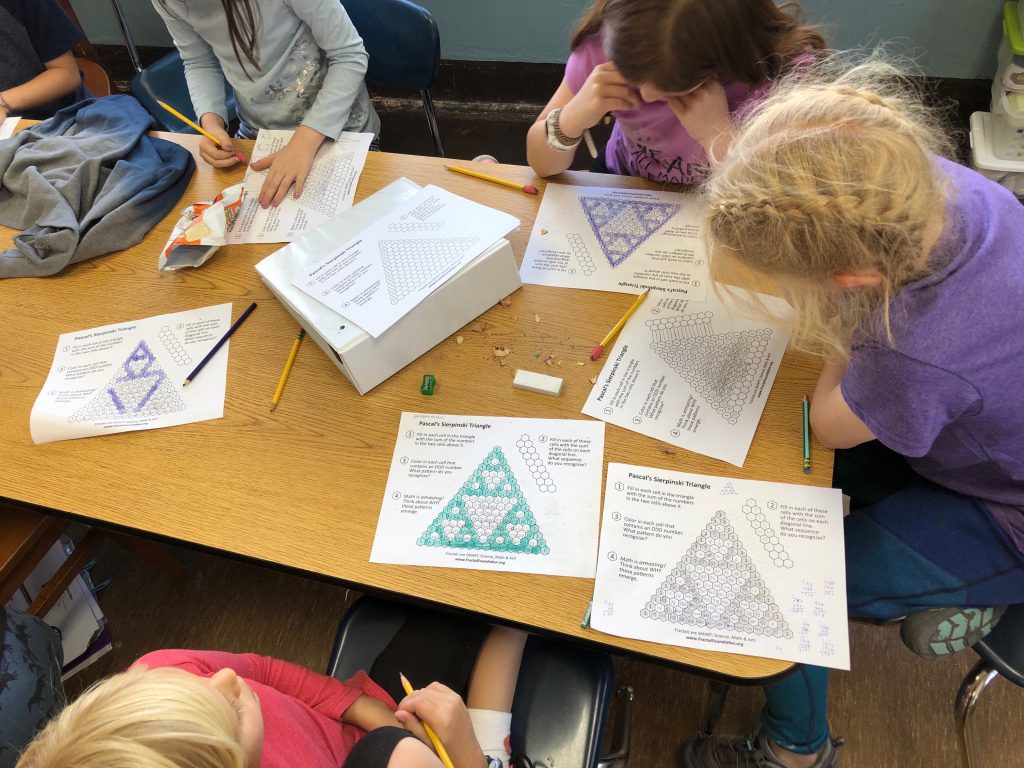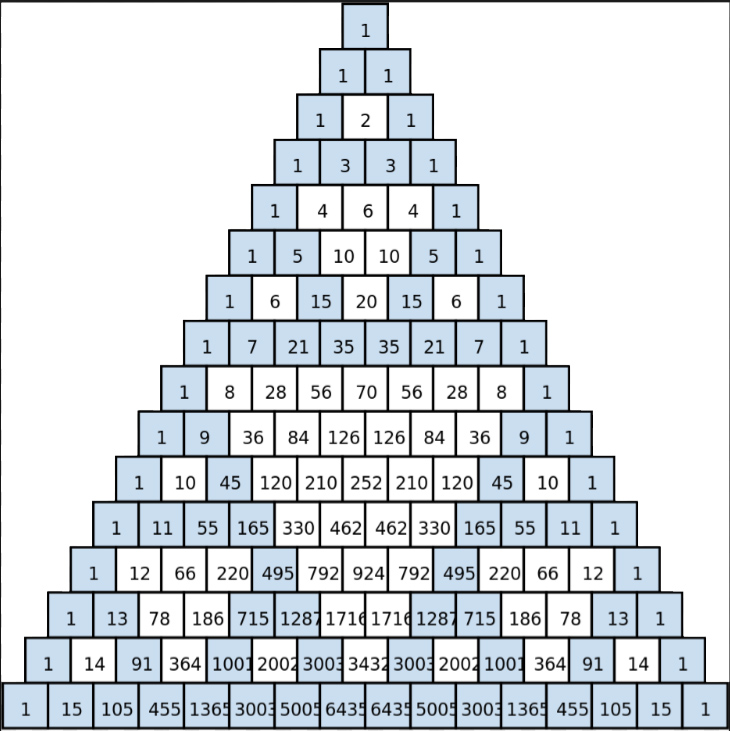
Pascal’s Triangle is a simple to make pattern that involves filling in the cells of a triangle by adding two numbers and putting the answer in the cell below. Just by repeating this simple process, a fascinating pattern is built up. It’s lots of good exercise for students to practice their arithmetic. It’s a good idea to work in pencil, and to have students check each others’ work as they go, because if they make a mistake early on, it will propagate all the way down. When they’re done filling in all the cells, the next step is to color in the cells that contain odd numbers. And – amazingly – the pattern that results is the Sierpinski Fractal Triangle! Furthermore, if you add up the diagonal rows as shown in the template, the result is the famous Fibonacci sequence. Mathemagic!

Use this image to check the answers, and it’s best to check often to catch any mistakes early!